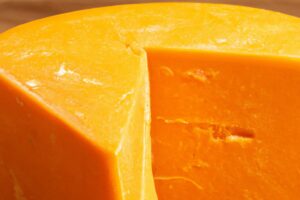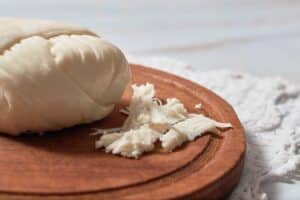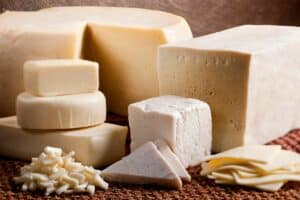Cheeses such as Gruyere, Jarlsberg, Mozzarella, and Cheddar are all good Swiss cheese substitute. They all have different flavor profile than Swiss cheese, but melt very well. So choose the one that best suits your dish.
What is Swiss Cheese Made of?
Swiss cheese, often called Emmental cheese, is a cheese from Switzerland that has a mild, buttery, and full flavor. Because of its good melting point, Swiss cheese is often a traditional ingredient found in fondue and is normally a pale yellow color, with various sized holes that develop during the fermentation process.
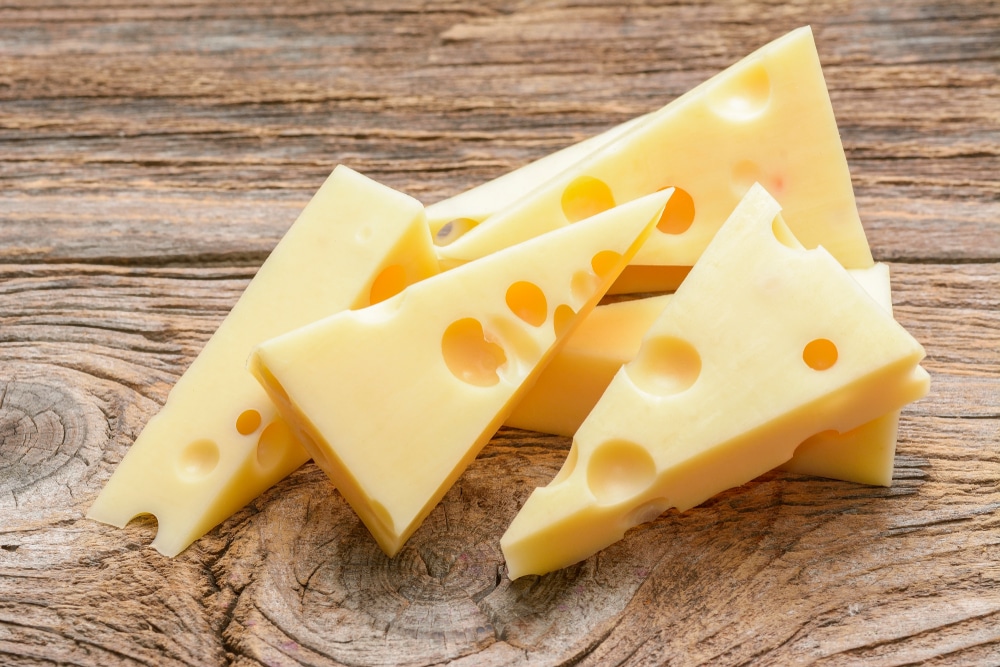
This cheese is semi-hard and produced from unpasteurized cow’s milk, meaning there are no additives or GMOs. It dates back to the 13th century and is Switzerland’s oldest cheese. Swiss cheese is an integral part of this country’s heritage. Its noticeable characteristics include a smooth, firm, and dense texture with a hard, inedible rind.
The flavor itself can change. For example, young-aged Swiss cheeses are milder in flavor, whereas older cheeses have a nutty, strong, and complex flavor. France, Germany, and the U.S. produce Swiss cheese for a moderate price at various supermarkets.
Swiss cheese is used in practically any dish that requires melting cheese, such as gratins, casseroles, sandwiches, pasta, quiches. Or, it can be eaten cold, served with fruit and other cheeses. Speaking of other cheeses, say you don’t have access to Swiss, but the recipe you’re reading states it in the ingredient list.
5 Recommended Swiss Cheese Substitute
The 5 most common cheese like swiss:
- Gruyere Cheese
- Jarlsberg
- Mozzarella
- Fontina
- Cheddar
Gruyere Cheese
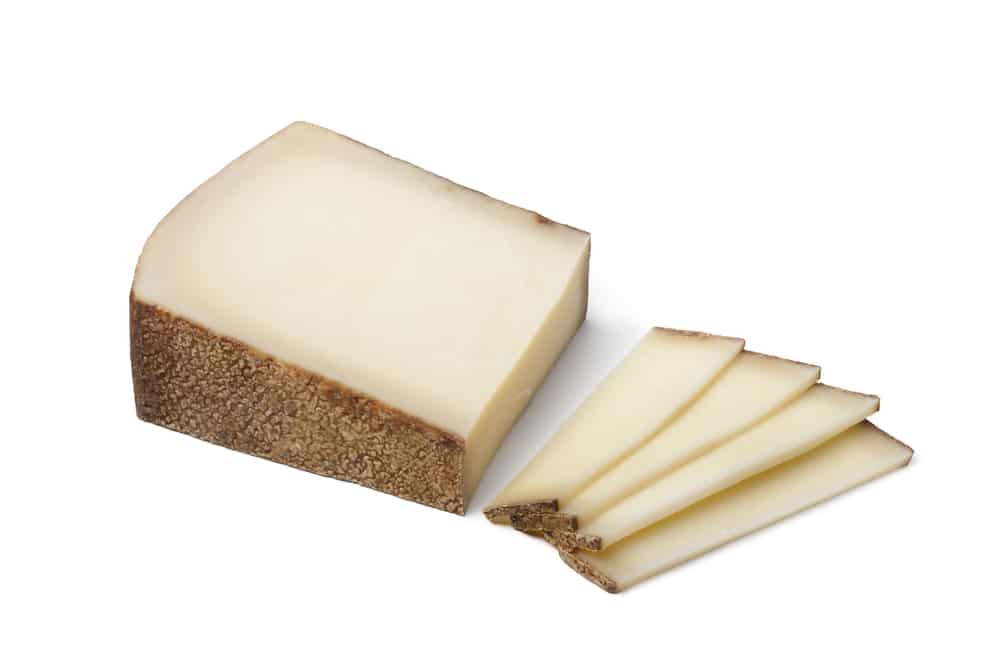
This first Swiss cheese substitute, Gruyere, has a few similar qualities to its cousin, Swiss, with a nutty taste and a smooth melting texture. Another cow’s milk option, this cheese is aged for six or more months. Gruyere is a firm cheese with a pale yellow color and a rich, creamy mouthfeel. It has a few small holes but is not nearly as noticeable compared to Swiss.
Gruyere is cured with a combination of enzymes and has a higher water content that both contribute to it melting easily. Cheeses dry out the longer they age, so young or fresh cheese melts better. Gruyere is available in supermarkets but can be expensive. Gruyere compliments sandwiches, cheese platters, and fondue flawlessly.
Jarlsberg Cheese
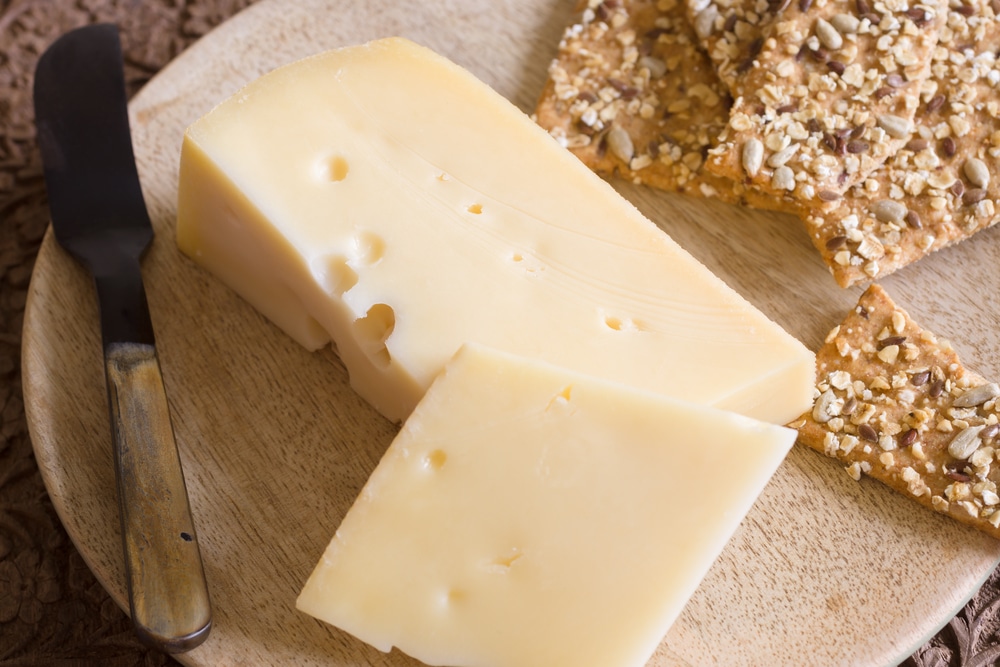
This second pick is a mild-aged, smooth, and slightly rubbery cheese. Jarlsberg cheese is renowned for its buttery and nutty flavor. It continues to be available in native Norway as well as the U.S., Australia, Canada, and the United Kingdom.
Jarlsberg is served on cheese boards, deli trays, sandwiches and can be bought as wedges, slices, or shredded. It’s an ideal Swiss cheese substitute because it was developed with Swiss’ or Emmental’s characteristics, combined with influences from Dutch Gouda. It didn’t gain popularity until the mid-1900s but is now responsible for 80% of Norway’s cheese exports, seen in restaurants and grocery stores.
Its recognizable flavor comes from being salted and stored for three months. It comes in several variations: low-fat, extra-aged, rindless, and original. Similarly, Jarlsberg can be used in hot and cold sandwiches or on snack plates.
In addition, it melts well for cheesy dips or can be grated into various dishes to enhance the flavor and texture. Soups and sauces are common recipes for Jarlsberg, along with anything egg, potato, or pasta.
Mozzarella
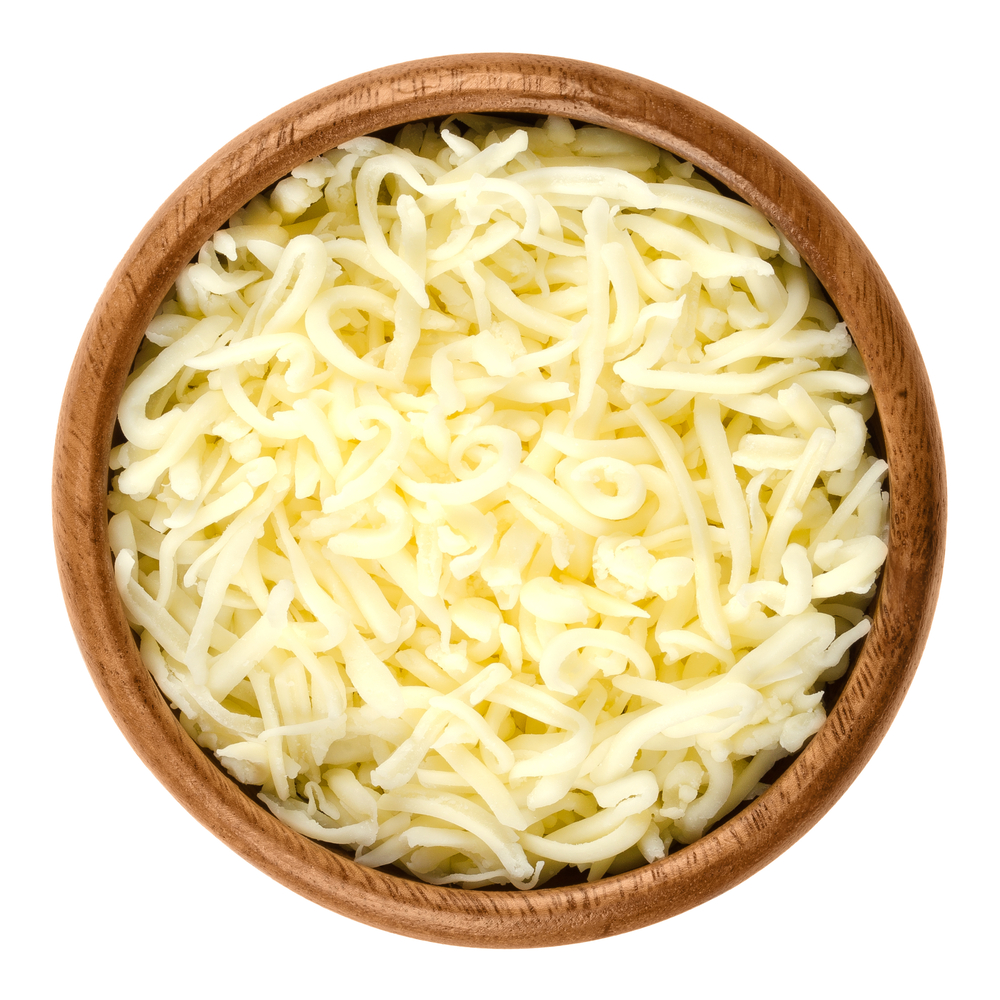
Everyone’s (hopefully) heard of mozzarella. This curd cheese originated in Italy and came from the milk of a water buffalo, resulting in a delicate, milky flavor. It’s one of the healthier cheeses due to its low fat and sodium content.
Buffalo milk is more nutritious than cow’s milk, meaning you’ll get higher calcium, protein, and iron content without as much cholesterol. It’s normally served fresh and is semi-soft with a noticeable white color.
Mozzarella isn’t aged, as the previous options, and is eaten within hours after being made. It’s silky, soft, delicate, and mild in flavor, eaten at room temperature to best enjoy its subtle flavor. This cheese is sold at various prices and is used in countless recipes. You can slice it and toss over salad or pair it with poultry, meat, seafood, and other vegetables. Of course, you can’t forget pizza.
Mozzarella Cheese is unique and difficult to replicate in flavor and is high in moisture, so it needs to be refrigerated and used immediately since it doesn’t last as long as other cheeses.
Paninis, bruschetta, and crostinis are common recipes that contain this cheese, but it goes well with fruits like melons and tomato or is used in stuffings for protein-packed dishes, making it a good Swiss cheese substitute for its versatility.
Learn how to preserve mozzarella cheese by freezing.
Fontina
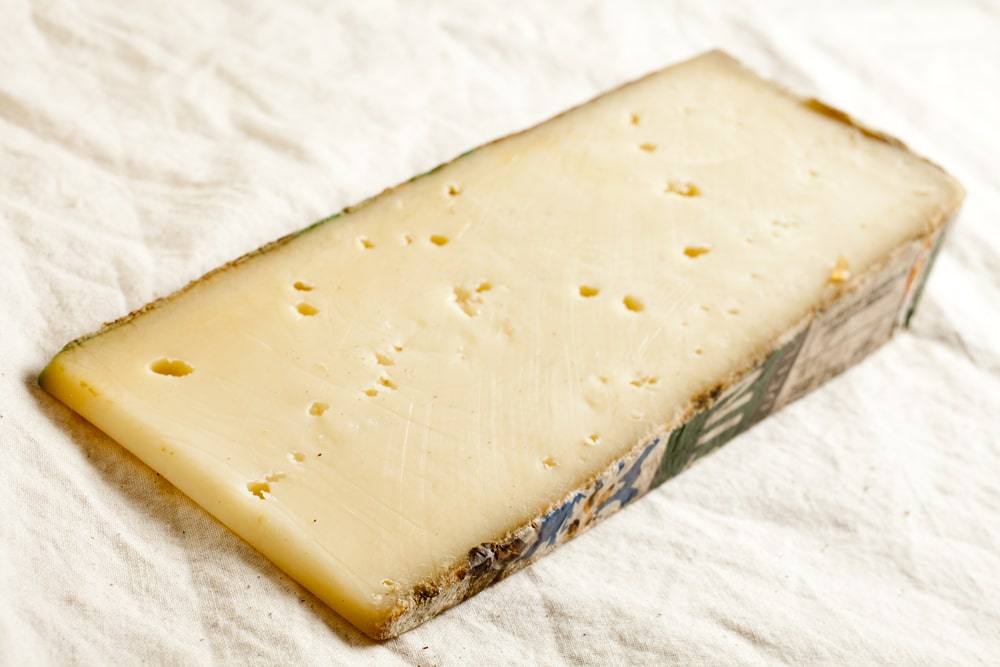
Fontina is created from whole, unpasteurized cow’s milk in Italy, but can be found in Sweden, the U.S., Canada, and Argentina. It’s a semi-soft cheese when young and grows firmer as it ages, which can take up to 150 days.
It’s light yellow in color and has a whopping 45% fat content. It has numerous small holes and generally has a mild, nutty flavor, depending on the age. Normally, if you want to serve this cheese as a table cheese, opt for a younger variation. But if you want to pack a punch in flavor and incorporate it into your savory meal, older is better.
This cheese has a few variations; raw milk leads to a lower moisture level. However, Swedish Fontina is mild, milky, slices well, and melts perfectly. American-style is very mild, aged shortly, and has a high moisture content.
Young Fontina cheese melts well, so any recipe that calls for smooth, gooey cheese, like fondue, sauces, mac and cheese, pizza, etc., would be fantastic. Not only that, but this cheese can be grated over soup, incorporated into rice or risotto, and various other savory dishes. Its flavor makes it a good substitute for Swiss cheese and can be used in countless meals.
Fontina can be grated, then frozen, but keep in mind the texture will dry out, and the flavor will be duller. However, you can eat the rind as opposed to the former cheeses.
Need something similar to fontina? See excellent fontina substitute.
Cheddar
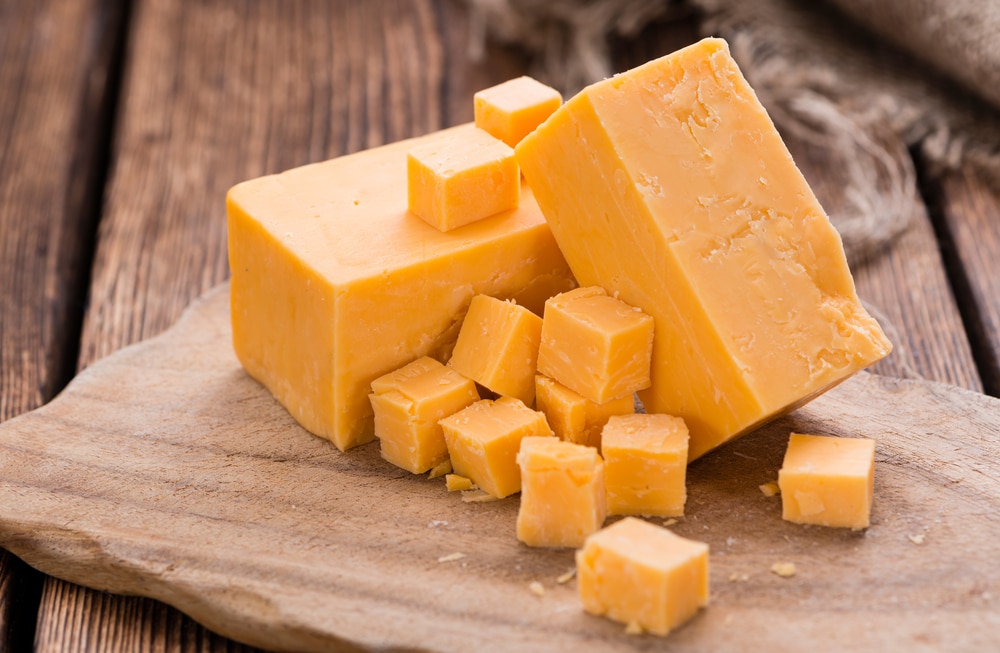
Last but not least, cheddar. A cheese that everybody knows. This firm cow’s milk cheese is from England, with a sharpness that increases with age. It’s tinted orange with natural annatto, a plant extract from the achiote tree, without altering the flavor. Cheddar is versatile, tangy, and melts well, rivaling Swiss cheese’s flavor and texture, and making it a prime Emmental cheese substitute.
This cheese is the most popular in the U.K., with the U.S. coming in a close second. It’s hard, sharp, and its natural flavor makes it widely produced around the world and in demand. Some variations include using goat or sheep’s milk. Its creamy, mild flavor makes it a necessary element in burgers, casseroles, and grilled cheese sandwiches.
Despite this, cheddar is inexpensive in the U.S., but some artisan varieties are made with traditional methods, developing more complex flavors. Cheddar does create a rind, like parmesan, but is trimmed off before sale.
Cheddar is a drier cheese with a dense, crumbly texture. The intensity of its flavor can vary from mild to extra sharp, depending on the aging process (two to three months vs. five years). Cheddar is used in anything from nachos to pasta to chili. Some people throw some cheddar over their warm slice of apple pie! Cheddar goes well with robust red wines, such as Merlot or Pinot Noir, and is incorporated into scones or pastries for savory treats.
A Few Other Facts About Swiss Cheese
Seeing that Switzerland has been a cheese connoisseur ever since the Middle Ages, they take their culinary arts seriously, playing a heavy part in their culture. Did you know that there was a government-subsidized organization called the Swiss Cheese Union? They had complete control over production and exportation through much of the 21st century, overseeing how, where, and when cheeses would be made.
Luckily, today’s cheesemakers can experiment with flavors, techniques, and recipes. There are various types of Swiss cheese, as seen below:
- Raclette: semi-soft or firm, pungent, salty, full-bodied, meaty with cream and hazelnut notes
- Forsterkase: semi-soft, wrapped in fir tree bark to achieve a woody flavor, aromatic
- Scharfe Maxx: nutty, oniony, with bacon notes, texture similar to cold butter, rich and tender
- Etivaz: made entirely by hand and smoked with natural wood
- Moser Screamer: soft, wind rind, mild in color but packs a flavorful punch, buttery, salty
Therefore, if you still wish to stick with the Emmental family and not vary into other cheeses, there are about 1,800 different types out there to choose from, so you won’t have an issue with finding a reasonable Emmentaler substitute for Swiss.
Conclusion
Swiss cheese is more nutty than salty, with a sweet roast to it, and with all the above cheeses, the ratios or portions for substitutions depend on what you’re making.
If you’re a cheese enthusiast, you may follow the motto of the more, the merrier, or you could sample the alternate cheese beforehand to determine its potency and how much more you should add to achieve a complex, delicious flavor to your meal.
Any of the previous options guarantee a memorable meal with multiple different flavors given through the type and origin of cheese you chose.


